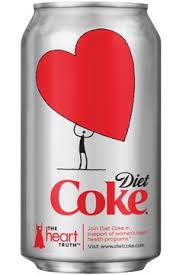December 6th, 2011 by MellanieTrueHills in Research
No Comments »


At the American Heart Association Scientific Sessions 2011, Dr. John Mandrola presented a poster on gender-specific results of atrial fibrillation ablation in a private practice setting. In this video interview with him about the poster, he mentioned that in his experience women appear to be more challenging to treat with atrial fibrillation ablation and do not appear to fare as well as men from it. In addition, it appeared that women were referred more often for AV node ablations than men.
*This blog post was originally published at Atrial Fibrillation Blog*
March 11th, 2011 by John Mandrola, M.D. in News, Opinion
No Comments »

It’s heart wrenching when young athletes die of sudden cardiac death (SCD). Last week the death of Wes Leonard, a Michigan high school star athlete, was especially poignant since he collapsed right after making the game-winning shot. This sort of tragedy occurs about one hundred times each year in America. That’s a lot of sadness. The obvious question is: Could these deaths be prevented? Let’s start with what actually happens.
Most cases of sudden death in young people occur as a result of either hypertrophic cardiomyopathy (HCM), an abnormal thickening of heart muscle, or long QT syndrome (LQTS), a mostly inherited disease of the heart’s electrical system. Both HCM and LQTS predispose the heart to ventricular fibrillation — electrical chaos of the pumping chamber of the heart. The adrenaline surges of athletic competition increase the odds of this chaos. Unfortunately, like heart disease often does, both these ailments can strike without warning.
Sudden death is sad enough by itself, but what makes it even worse is that both these ailments are mostly detectable with two simple painless tests: The ECG and echocardiogram (heart ultrasound). Let’s get these kids ECGs and echos then. “Git ‘er dun,” you might say.
On the surface the solution seems simple: Implement universal cardiac screening of all young athletes. And you wouldn’t be alone in thinking this way. You could even boast the support of Dr. Manny Alvarez of Fox News and the entire country of Italy, where all athletes get ECGs and echos before competing. But America isn’t Italy, and things aren’t as simple as Fox News likes to suggest. Read more »
*This blog post was originally published at Dr John M*
March 5th, 2011 by John Mandrola, M.D. in Opinion, Research
No Comments »

It’s hard to believe that turbulence could be a good thing for the heart. Consider how the word turbulent is defined: “Characterized by conflict, disorder, or confusion; not controlled or calm.” Those traits don’t sound very heart-healthy. But when it comes to heart rhythm, it turns out that a turbulent response — to a premature beat — is better than a blunted one. The more turbulent the better.
No, you haven’t missed anything, and turbulence isn’t another of my typos. Until [recently], heart rate turbulence was an obscure phenomenon buried in the bowels of heart rhythm journals.
What Is Heart Rate Turbulence (HRT)?
When you listen to the heart of a young physically-fit patient, you are struck not just by the slowness of the heartbeat, but also by the variability of the rhythm. It isn’t perfectly regular, nor is it chaotic like atrial fibrillation (AF). Doctors describe this — in typical medical speak — as regularly irregular: The heart rate increases as the patient inhales and slows as he or she exhales. This variability occurs as a result of the heart’s responsiveness to its environment. The more robustly and quickly the heart responds, the healthier it is.
HRT seeks to measure how quickly and vigorously the heart rate reacts in response to a single premature beat from the ventricle — a premature ventricular contraction (PVC). Normally after a PVC, the heart rate speeds for a few beats, and then slows back to baseline over the next 10 beats. The healthy heart responds with a more intense rise in heart rate and a quicker return to baseline. Using simple measurements of heart rate from a standard 24-hour electrocardiogram (ECG) monitor, a propriety software program averages many of these responses and comes up with a measurement of turbulence onset and turbulence slope. Read more »
*This blog post was originally published at Dr John M*
February 23rd, 2011 by John Mandrola, M.D. in Better Health Network, Opinion
1 Comment »

 I am a doctor. Go ahead, call me what you may. Group me into a neatly, prejudged category: “All you doctors.” Just don’t label me a sponge.
I am a doctor. Go ahead, call me what you may. Group me into a neatly, prejudged category: “All you doctors.” Just don’t label me a sponge.
That’s right. Recently in the Wall Street Journal, Mr. Andy Kessler, famous author and former hedge fund manager smart enough to turn $100 million into $1 billion, grouped doctors into a sub-category of the service economy which he labeled as “sponges.” We could have done worse: His other categories included “sloppers” (DMV workers), “slimers” (financial planners), and “thieves” (cable companies).
It seems that doctors — along with cosmetologists, lawyers, and real estate brokers — offend him because of the tests and licenses that we deem necessary:
Sponges are those who earned their jobs by passing a test meant to limit supply. According to this newspaper, 23% of U.S. workers now need a state license. The Series 7 exam is required for stock brokers. Cosmetologists, real estate brokers, doctors and lawyers all need government certification. All this does is legally bar others from doing the same job, so existing workers can charge more and sponge off the rest of us.
His essay goes on to argue the tired notion that technology endangers jobs in the service sector — the toll booth operator argument, again. He likes the creators of stuff: Apple and Google. (Duh.) But in my mind, doctoring is about creating something: We create better and longer lives for our patients. Ask the patient cured of cancer how happy they are that some doctor created his or her treatment plan. Read more »
*This blog post was originally published at Dr John M*
February 20th, 2011 by John Mandrola, M.D. in Opinion, Research
No Comments »

 It tastes sweet. It’s pleasurably fizzy. And free of calories. What’s more, the FDA says NutraSweet (aspartame) is safe. So what’s not to like about diet soft drinks?
It tastes sweet. It’s pleasurably fizzy. And free of calories. What’s more, the FDA says NutraSweet (aspartame) is safe. So what’s not to like about diet soft drinks?
A bunch. The ongoing debate about the healthiness of diet soft drinks reminds me of the old adage, “If something sounds to be true, it probably is.”
Artificially-sweetened “diet” drinks get touted as healthy alternatives to sugary drinks because they contain no calories or carbohydrates. On paper it seems plausible to think they are inert, no more dangerous than water. The Coca-Cola Company sublimely strengthens this assertion by putting a big red heart on Diet Coke cans.
But diet-cola news (Los Angeles Times) presented at the International Stroke Conference 2011 suggests otherwise. This widely-publicized observational study of 2,500 older patients (average age=69) from New York showed that drinking diet soda on a daily basis increased the risk of having a heart attack or stroke by 61 percent. The abstract — not a peer-reviewed study — stated that this association persisted after controlling for other pertinent variables.
Sure, this is only a look back at 559 patients who had a vascular event. The study asserts only an association, not that diet colas cause heart attacks and strokes. That’s a big difference.
That said, however, I don’t view these results as trivial either. This trial builds on the results of prior studies of diet drinks which strongly suggest that despite their lack of calories, diet drinks don’t prevent obesity. Read more »
*This blog post was originally published at Dr John M*
 At the American Heart Association Scientific Sessions 2011, Dr. John Mandrola presented a poster on gender-specific results of atrial fibrillation ablation in a private practice setting. In this video interview with him about the poster, he mentioned that in his experience women appear to be more challenging to treat with atrial fibrillation ablation and do not appear to fare as well as men from it. In addition, it appeared that women were referred more often for AV node ablations than men.
At the American Heart Association Scientific Sessions 2011, Dr. John Mandrola presented a poster on gender-specific results of atrial fibrillation ablation in a private practice setting. In this video interview with him about the poster, he mentioned that in his experience women appear to be more challenging to treat with atrial fibrillation ablation and do not appear to fare as well as men from it. In addition, it appeared that women were referred more often for AV node ablations than men.











